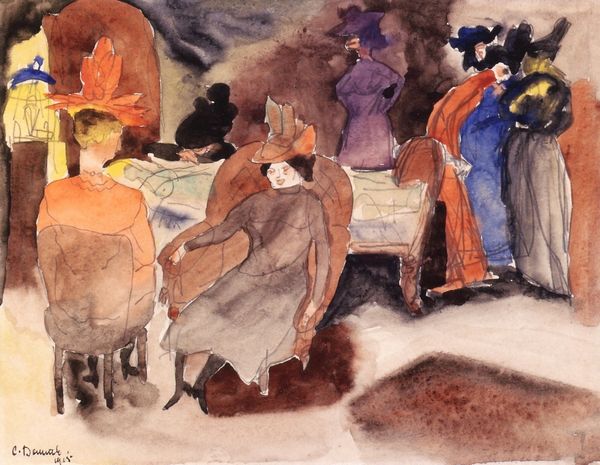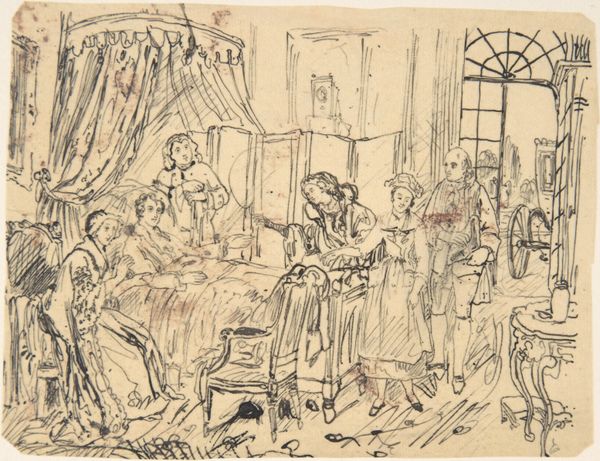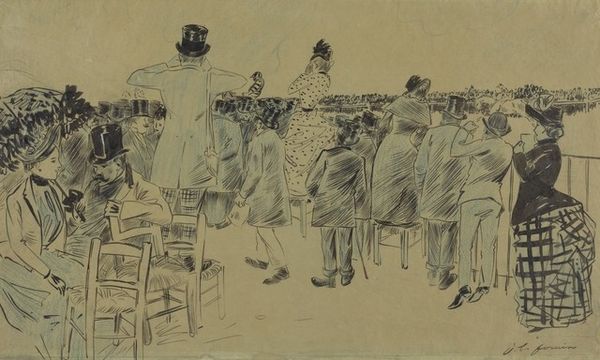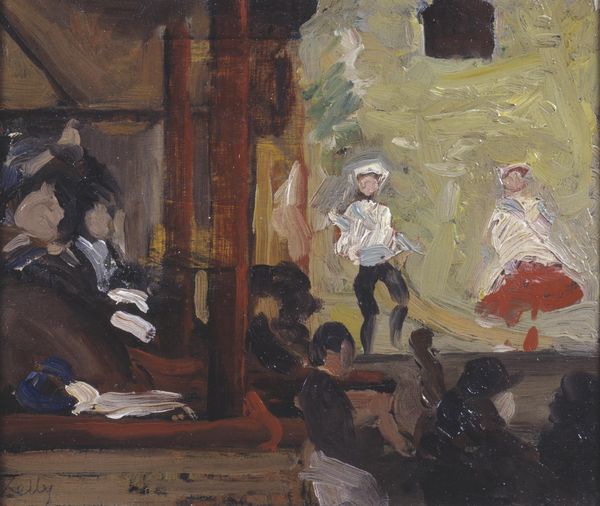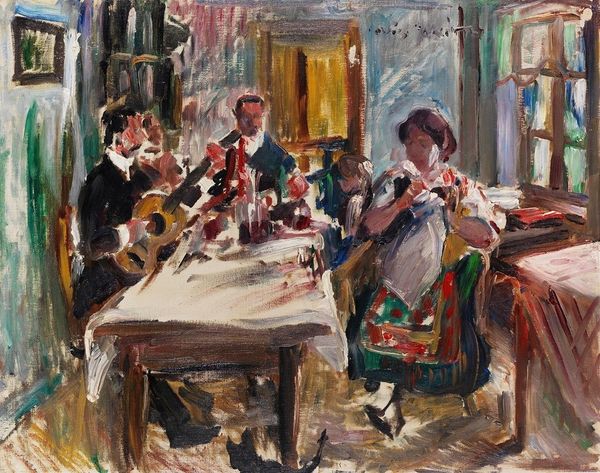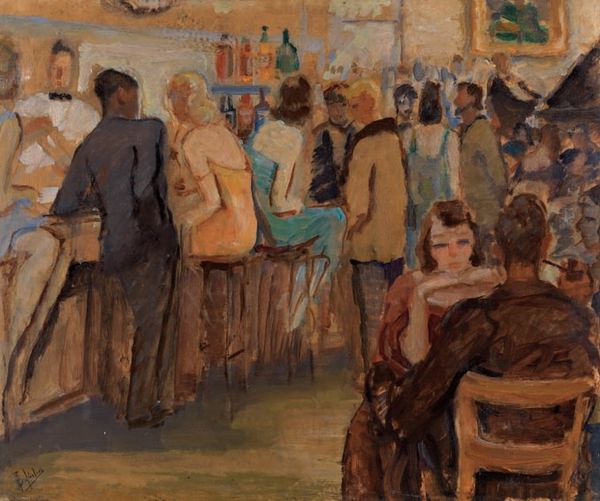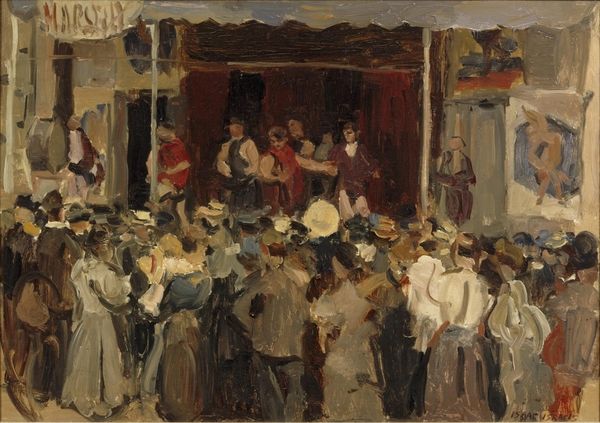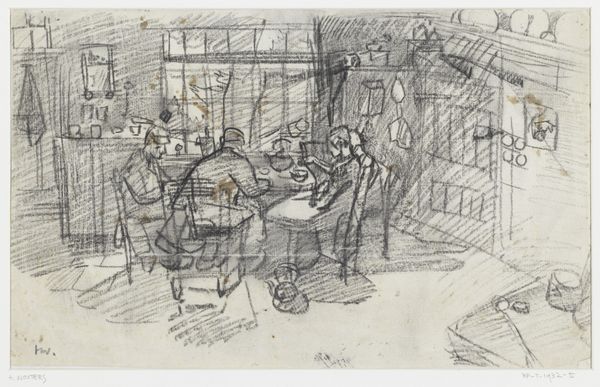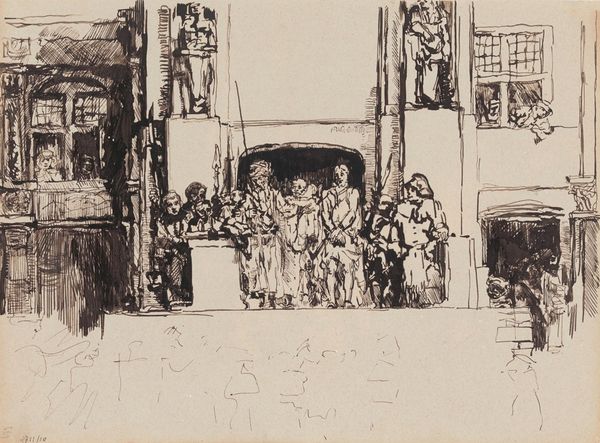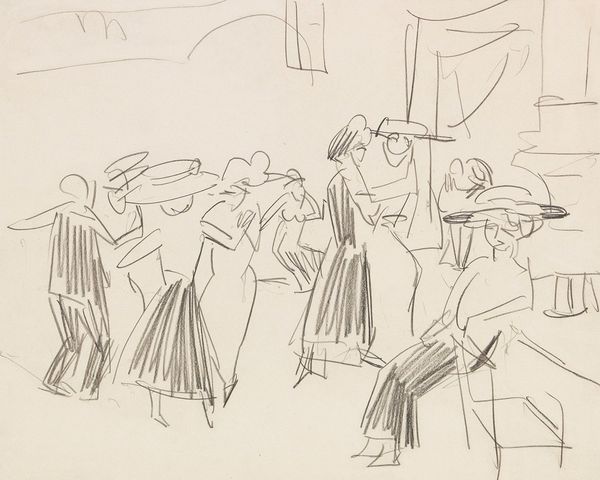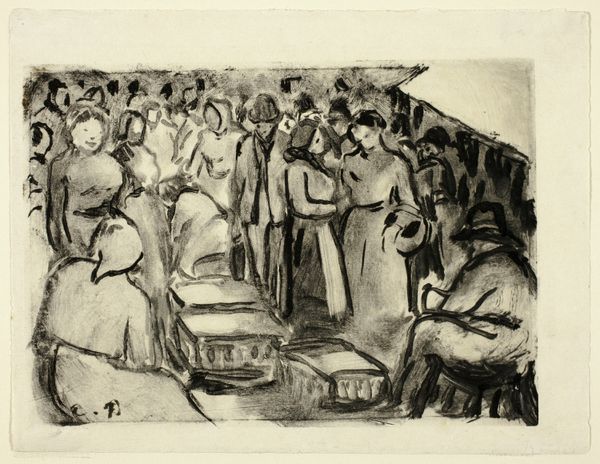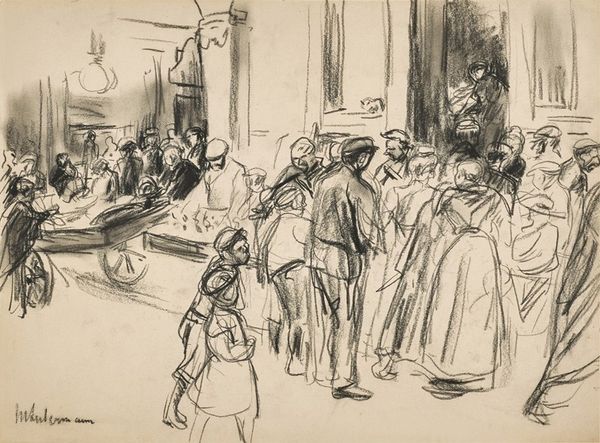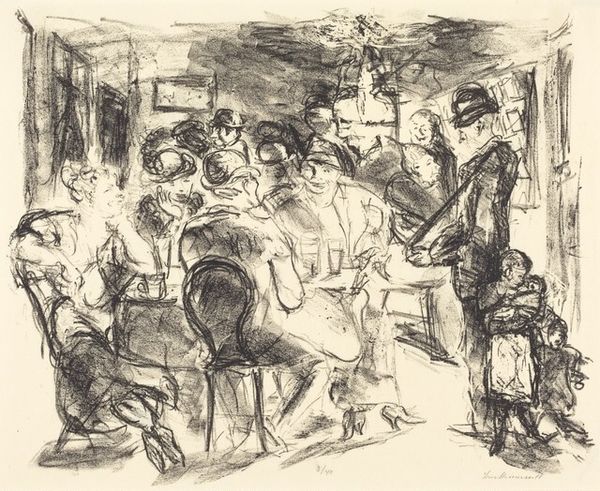
Dimensions: 31.43 x 41.59 cm
Copyright: Public domain
Curator: Maurice Prendergast's "The End Men," painted in 1914, presents a fascinating scene. What's your immediate take? Editor: It feels like peering through a hazy memory. A bit dreamlike. Is it a play? A ballet? All those frilly white dresses... They float against the murky background, sort of unsettling actually. Curator: The work does invite that layered reading. Technically speaking, note Prendergast's skillful application of watercolor to create depth and texture. Observe how the composition juxtaposes the performers onstage with the musicians in the orchestra pit. A division in labour and aesthetic expectation. Editor: I love that 'division.' You feel the separation, but also the interconnectedness. The dancers, almost angelic, with the orchestra adding, the earthly rhythm! And those odd figures at the margins--they almost look like ghostly onlookers. The 'end men', maybe referring to minstrel shows that closed performances. Interesting use of implication and underpainting here. Curator: Indeed. The composition reveals an interplay of societal themes, even anxieties around class and leisure during that era. His style embraces Impressionistic principles, capturing a sense of fleeting moments and social observations. We could dissect how Prendergast applies color and form to evoke emotions... Editor: ... Or we can feel it, just feel it. The hazy browns and muted tones really give a feeling of old glamour and maybe even a tinge of sadness. I love how he captured the musicians below, a sense of almost dreamlike blur, which I always loved about Degas also. The theater’s history of both high culture and questionable tropes really oozes off this piece, doesn’t it? The energy crackles! Curator: A worthwhile observation, particularly the intersection with Degas. Prendergast employs a similar attention to movement, and perhaps a deconstruction of classical ballet aesthetic. Editor: Exactly. The piece has got the edge though – not just sugar and tutus. Anyway, what strikes you most? Curator: How Prendergast so expertly synthesizes structure with the emotional timbre, ultimately revealing the layered nature of spectatorship within early 20th-century American cultural spaces. Editor: For me? It's that spooky-beautiful glimpse into the past, the faint echoes of performance and how Prendergast captured, and gave, a second act to that ghostly realm.
Comments
No comments
Be the first to comment and join the conversation on the ultimate creative platform.
